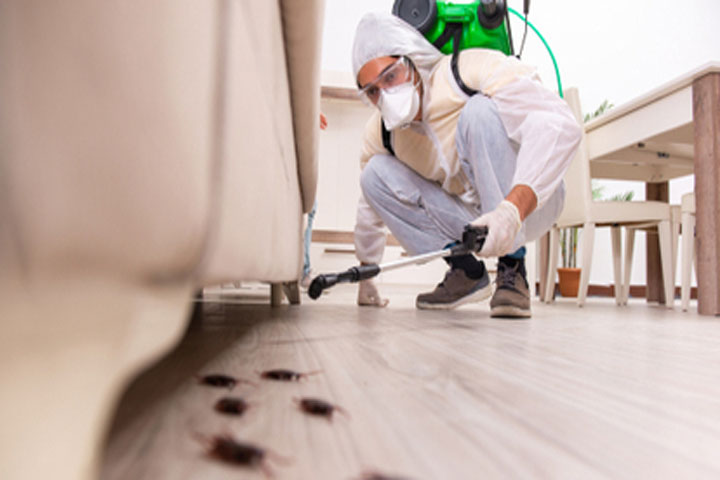Expert Bed Bug Exterminator: Rest Easy Recognizing Your Home is Bug-Free!
Wiki Article
Professional Insect Control Techniques for Long-Term Outcomes
In the realm of bug control, accomplishing sustained efficiency and lasting outcomes needs a meticulous method that goes beyond plain elimination. Specialist pest control methods envelop a thorough method that begins with a comprehensive evaluation and analysis, adhered to by exact bug recognition to recognize their actions patterns. The application of Integrated Bug Administration (IPM) concepts, coupled with eco-conscious therapies, forms the cornerstone of lasting pest removal. The real examination lies in the continuous monitoring and maintenance of the dealt with locations, making certain a pest-free environment for the near future. By delving right into the details of these techniques, a much deeper understanding of specialist bug control approaches for sustaining results arises.Inspection and Evaluation
Upon getting in a residential or commercial property for parasite control services, the initial step is a thorough assessment and analysis to recognize the extent of the problem and identify the most efficient therapy plan. Expert bug control technicians are educated to carefully check out the facilities, searching for indicators of insect activity such as droppings, munch marks, nests, or any structural damages. They will certainly also examine the conditions that may be attracting insects, such as food sources, water leakages, or entrance points.
Pest Identification and Behavior

Moreover, recognizing the behavior of the identified parasite is key to executing effective control procedures. Understanding where bugs nest, what they feed on, and their activity patterns can assist pest control experts design approaches to eliminate them successfully. Some insects may be nocturnal, while others are much more active throughout pest control association the day. This expertise enables for the application of treatments at ideal times for optimum efficiency.
Integrated Parasite Management (IPM)
Integrated Pest Management (IPM) methods combine numerous strategies to manage and prevent pest invasions in a lasting and ecologically pleasant way. pest control. By integrating techniques such as organic control, habitat control, adjustment of social practices, and the use of resistant ranges, IPM intends to reduce using chemical pesticidesAmong the crucial principles of IPM is the focus on avoidance. This proactive approach involves monitoring insect populations frequently to discover any type of prospective concerns before they intensify. By recognizing pest issues early on, pest control measures can be applied promptly and successfully.
Additionally, IPM promotes the use of safe pest control approaches whenever feasible. This can include utilizing natural predators of the insects, introducing helpful insects, or using scents to interrupt breeding patterns. By minimizing dependence on chemical pesticides, IPM not only safeguards the atmosphere yet likewise helps keep an equilibrium in the ecosystem.
Environmentally-Friendly Treatments
Applying eco-conscious techniques in pest control treatments can successfully address invasions while focusing on ecological sustainability. Environmentally-friendly therapies concentrate on minimizing the effect of insect control methods on ecosystems, non-target organisms, and human health. These techniques often include making use of natural predators, such as ladybugs Get the facts or nematodes, to control pest populations, minimizing the need for chemical treatments. In addition, techniques like environment adjustment, such as changing dampness degrees or getting rid of food resources, can assist discourage bugs without the use of unsafe materials.Another trick element of environmentally-friendly therapies is making use of natural and naturally degradable items that break down rapidly without leaving unsafe residues in the carpenter ants pest control atmosphere. Agricultural insecticides originated from plants like chrysanthemums or neem provide effective insect control while presenting marginal threat to non-target varieties. Employing approaches like warmth therapies or pheromone traps can target certain parasites with accuracy, reducing the total ecological impact of parasite control techniques.
Ongoing Tracking and Maintenance
Constant security and maintenance are vital components of effective bug control monitoring. Recurring monitoring plays a vital duty in guaranteeing that pest infestations are identified very early and managed quickly. Normal inspections by experienced professionals are required to identify any kind of indications of bug task, assess the effectiveness of previous therapies, and make modifications to the parasite control plan as required. By checking bug populations with time, pest control experts can track trends, anticipate possible issues, and apply precautionary measures to reduce the risk of future infestations.
Along with tracking, maintenance practices are essential for long-term bug control success. This consists of implementing correct cleanliness procedures to get rid of possible food and water resources for pests, sealing entry indicate prevent pests from getting in the facilities, and dealing with any structural issues that might facilitate bug invasions (exterminator). By incorporating ongoing tracking and maintenance right into an incorporated pest monitoring technique, services can make sure a pest-free setting and safeguard their home versus pricey damage and wellness threats
Final Thought
Finally, utilizing specialist insect control techniques such as detailed evaluation and analysis, accurate insect recognition and understanding of their behavior, integrated parasite management methods, environmentally-friendly therapies, and recurring monitoring and upkeep are essential for attaining long-lasting lead to bug control. By carrying out these methods, individuals can properly take care of insect infestations and maintain a pest-free setting in a sustainable way.Report this wiki page